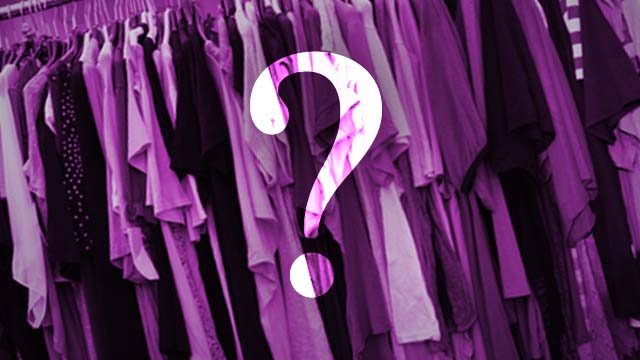SUMMARY
This is AI generated summarization, which may have errors. For context, always refer to the full article.
![[Thinking Through Design] In fashion, what makes ‘good’ taste?](https://www.rappler.com/tachyon/r3-assets/E2FB45B738DB4F1A9BFB03721C1424F4/img/46ABF21159D847C589EBD76D2D1B21A0/2014_04_14_pamela_cajilig.jpg)
Two girls, perhaps in their early twenties, lounged near my table one afternoon at a café I tended to frequent.
I was in a laid-back neighborhood nestled in between a bungalow and a dermatologist’s clinic. Customers who walked in typically wore outfits that reflected the easygoing ordinariness of the weekend, the café, and its surroundings: t-shirts, jeans, tank tops, flip-flops, sandals, and the occasional maxi dress.
Dressed in shorts and buttoned-down sleeveless tops, the women beside me were dressed similarly. I was typing away and managed to ignore their chatter until they stopped abruptly and started speaking in hushed, conspiratorial tones.
I turned around and glanced at the object of their raised eyebrows: a woman around their age had entered the store and was in line, tugging nervously at her top. Her look stood out from the rest: a sheer green long-sleeved blouse that swirled with red, white and pink roses was tucked into fitted magenta jeans and paired with 3-inch black pumps, and she was in full makeup.
“O, may party pala dito (There seems to be a party here),” said one.
“Uy, feeling OOTD (outfit of the day),” said the other.
I was less interested in the outfit of the woman at the counter and more intrigued by the exchange it managed to spur. Knowing what make for “bad taste” is clearly important for the vast majority of us, or else talking about it wouldn’t be such an everyday occurrence. We are likely to engage in conversations about what we choose to wear on our Facebook feeds as much as we are in our offline interactions. “Bagay ba ‘to?” (Does this go?) “May dress code ba?” (Is there a dress code?) “Who wore it best?”

My friends and I have a favorite question we jokingly ask each other whenever we try outfits we feel are bordering on bad taste: “Friends pa ba tayo kung isuot ko ito (Will we still be friends if I wear this)?”
Sometimes the answer is a flat “Kung walang ibang makakakita sa atin, oo (If no one else sees us, then yes).” Taste, and consequently taste in fashion, is a social matter. It is almost never about just ourselves as individuals. It is ultimately also about our links with the people in our lives.
Taste as a social matter makes it emotionally complicated. Consequently, the need to make fashion choices can cause much apprehension. A woman can have the advice of the most recognized fashion magazines in the world, but still deviate out of the desire to please important people in her life, whose own tastes might not match those touted by the media: in-laws, spouses, and parents.
In Curiosity’s research on the financial priorities of low-income women, the lack of having “pampasyal (leisure)” or “pansimba (church)” clothes was considered a major threat to their dignity and their ability to find work and borrow money, their own definition of bad taste. In these circles good taste is not necessarily defined by wearing the latest style or by knowledge of “good quality,” but by just having something new and not faded, as well as well-pressed.
Perhaps the pertinent question is not what makes for bad taste in fashion. Rather, it is about how our everyday experiences and relationships might influence the ways in which we dress, and cause us to revisit or resist definitions of taste.
Understanding taste in this manner frees us to veer away from fashion as a venue to raise our eyebrows at other people, and instead view it as field that could enhance our understanding of each other and ourselves. – Rappler.com
Pamela Cajilig specializes in business and design anthropology; her graduate work has focused on the cultural significance of everyday clothing. She is also Co-Founder and Principal of Curiosity Design Research, an organization that helps non-profits and companies use design as a platform for inspiration, solutions, and social change.
Photo of a rack of clothes from Shutterstock
Add a comment
How does this make you feel?
There are no comments yet. Add your comment to start the conversation.